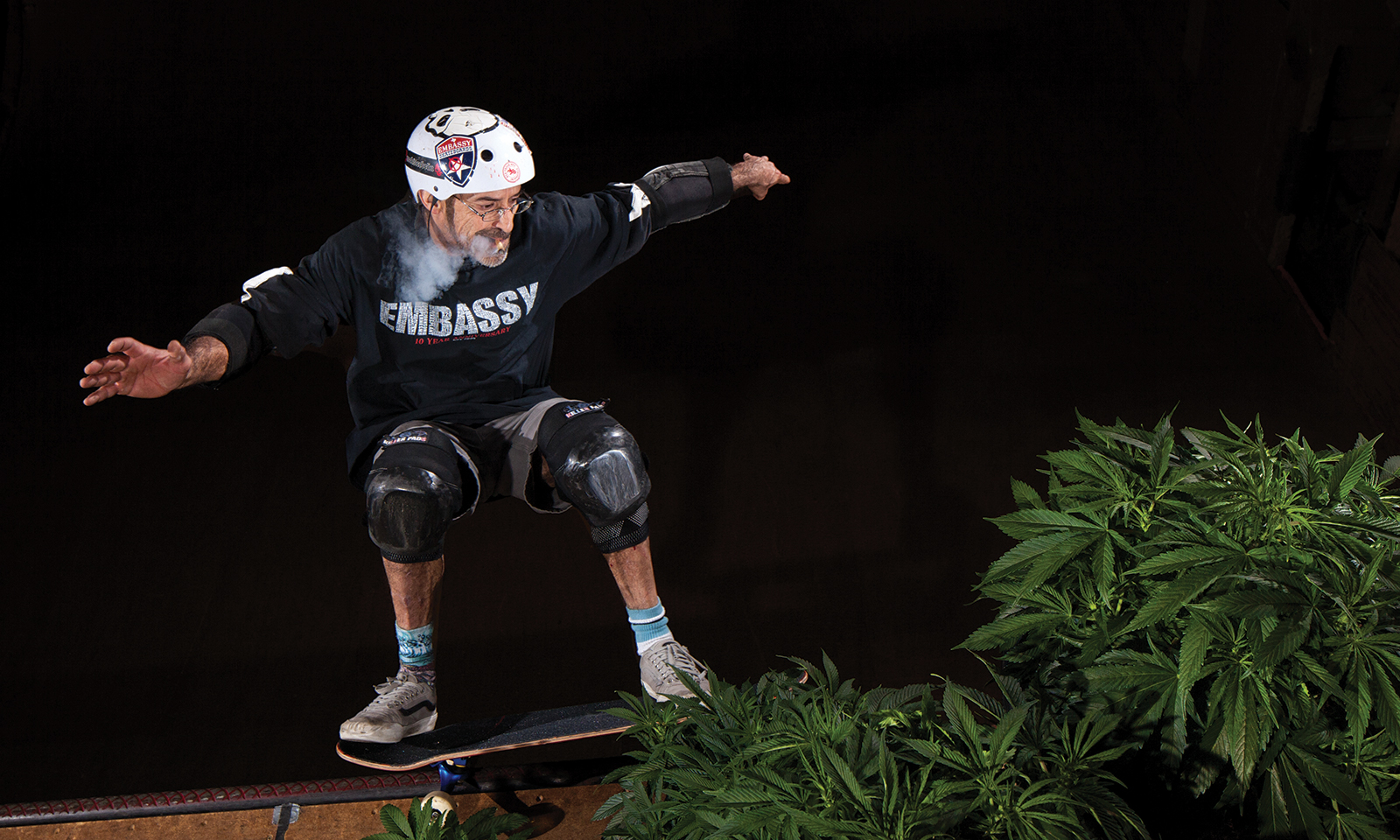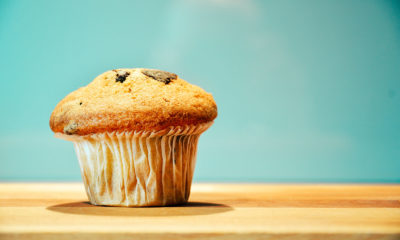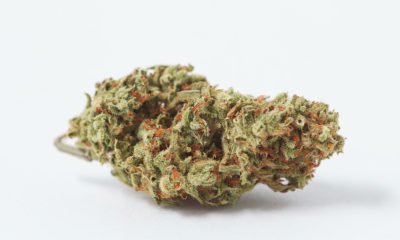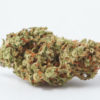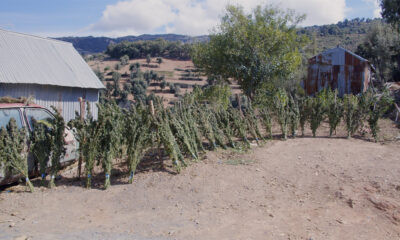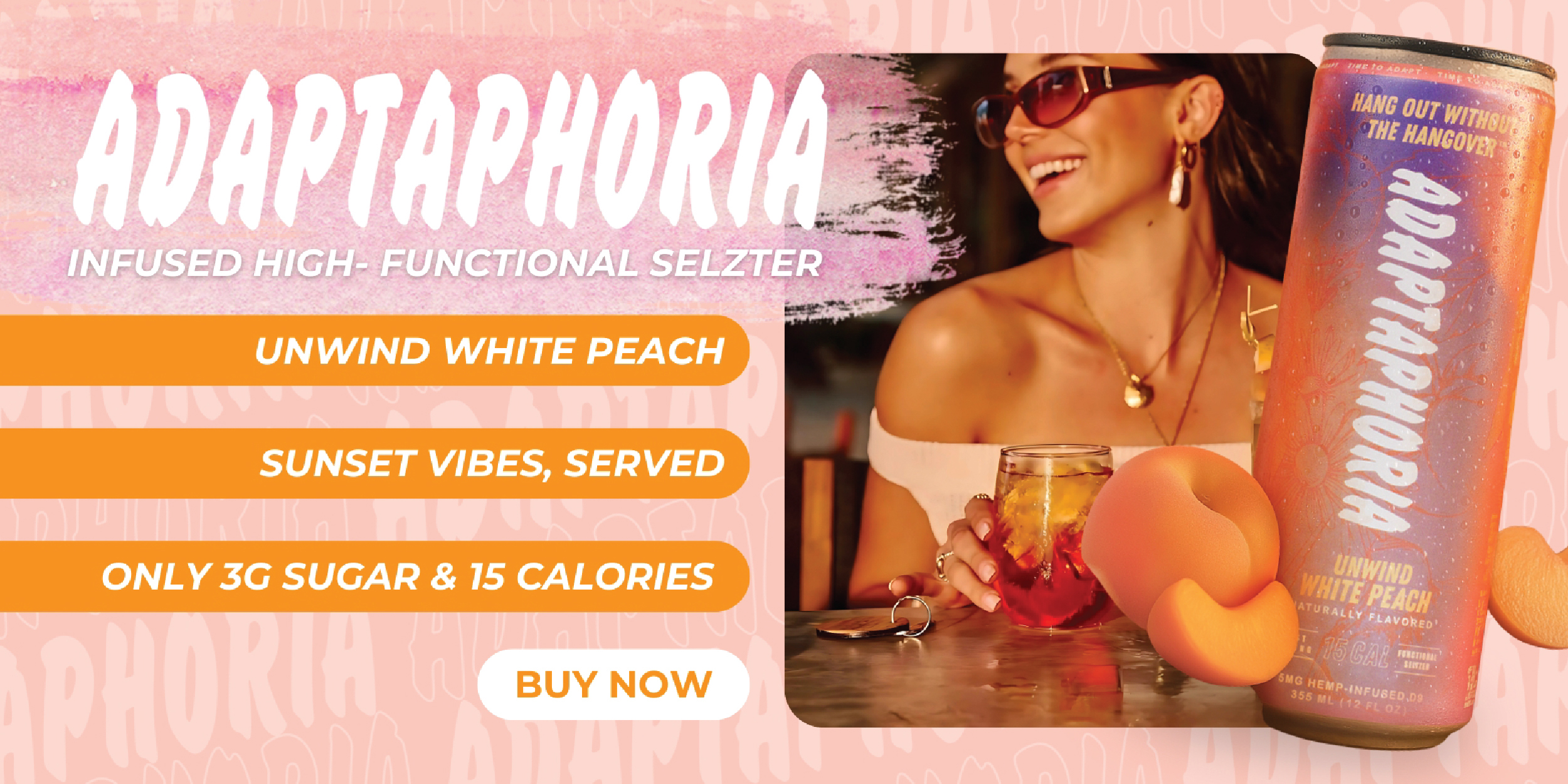Roll Models: Meet the Skaters Who Use Cannabis to Curb Pain
The World Anti-Doping Agency just started a cannabis crackdown against professional skateboarding, but these old-school shredders say weed has helped them manage pain for decades without getting into opioids.
Next summer, competitive skateboarding will make its Olympic debut in Tokyo. As a result, a sport that originated among self-described “dirtbag” street kids will gain a new echelon of mainstream approval, along with a massive global audience.
But it comes at a price.
Skateboarding’s biggest stars are now under the scrutiny of The World Anti-Doping Agency, an international organization that “harmonizes anti-doping policies, rules, and regulations… around the world.” In January 2019, the agency announced that 19-year-old phenom Cory Juneau had failed a drug test for THC while competing at the Oi Park Jam in Itajaí, Brazil the year before. Initially they hit Juneau with a six-month suspension, but after completion of an anti-doping educational course, the suspension was reduced to just three months, and applied retroactively. So Juneau didn’t miss any competitions. But the incident did make headlines around the world, and it served as a warning shot for any pro skateboarder who considers cannabis an integral part of their health, wellness, training and recovery regiment.
Because as far as the Olympics are concerned, you can get as drunk as you want, pop as many pills as your physician will prescribe and smoke two packs of cigarettes a day — just don’t consume any cannabis, even if it’s legal where you live. If you do, you’re out on your ass.
Ironically, the Olympics didn’t even list cannabis among banned substances until Canadian Ross Rebagliati embarrassed them into it as winner of the first ever gold medal for snowboarding at the 1998 winter games. Not long after hearing his nation’s anthem play triumphantly, Rebagliati was stripped of his medal when a drug test came up positive for THC, only to regain it shortly thereafter when the World Anti-Doping Agency had to admit that cannabis was not actually on their list of banned substances.

His Olympic laurels restored, Rebagliati became an instant celebrity all over again. And 20-plus years later, he’s now the head of Ross’ Gold, a medical cannabis business in Canada, where the “drug” that got him banned has just been legalized nationwide.
So all’s well that ends well for him. But what about today’s generation of skateboarders and snowboarders?
They’re being forced to choose between getting high and competing at the highest levels, and Australian skateboarding legend Tas Pappas — who became number one in the world at the 1996 World Championships — thinks some top pros might opt out of the Olympics before they pee in a cup.
“I’m wondering how it’s going to work as far as the drug testing is concerned,” he told ABC News. “Because some guys skate really well on weed and if they have to stop smoking for one competition [the Olympics], it might really affect their performance.”
Getting cut off from cannabis will also negatively impact pro skateboarders’ ability to deal with the aches and pains (and worse injuries) that come with the territory without resorting to prescription painkillers and other opioid-based drugs. According to a recent study, retired NFL players pop painkillers at four times the rate of the general population. Competitive skateboarders face many of the same types of painful injuries, but while the NFL punishes pot smoking athletes more harshly than violent criminals, the skateboarding community — until now — has largely embraced weed as a way of life.
So to find out if cannabis can play a positive role in preventing opioid abuse and reducing its harms, I spent a smoky afternoon hanging out with some legendary old-school skaters who still shred massive vert ramps some 40-plus years after they first took up the sport.
Ramping Up Production
In an industrial rail yard not far from San Francisco, heavy metal and punk rock deep cuts from the 1980s are leaking out of a nondescript warehouse, an old-school soundtrack punctuated by shrieks of joy and, occasionally, a skidding thud.
I walk inside and encounter a thick cloud of cannabis smoke. When my eyes adjust, I’m standing at the base of a 11.5-foot tall, 32-foot wide skateboard ramp, with 10-foot transitions and 1.5 feet of vertical drop at the top of the ramp. It’s Saturday afternoon, so no work today, but in a strictly business sense, this is a processing facility for Dyna-Gro — a 35-year-old company that “provides growers with complete, easy to use, cost-effective, liquid nutrient concentrates.”
Co-owner Greg Neal tells me that his father and fellow co-owner David Neal founded the company, along with a friend who was a chemist, in order to help fellow cannabis cultivators get the most out of their crops. They started out creating their own nutrients in small batches back in the 1970s, and over the decades to follow, outgrew several previous locations before moving Dyna-Gro into this warehouse in 2008.
“We had so much extra room here that I could fulfill a dream,” Neal says. “Vans Skatepark in [nearby] Milpitas had just shut down, and there was nowhere else to go. So we built this.”
Neal has been skating since he was 10 years old and “tick-tocking around the block on a plastic board with horrible wheels.” When he first got introduced to skating ramps at a legendary spot called The HP Ramp in San Francisco, it sparked a lifelong passion. So he and his father did what any sensible business owners would do in such a situation — they built a massive skate ramp in the center of their workspace.
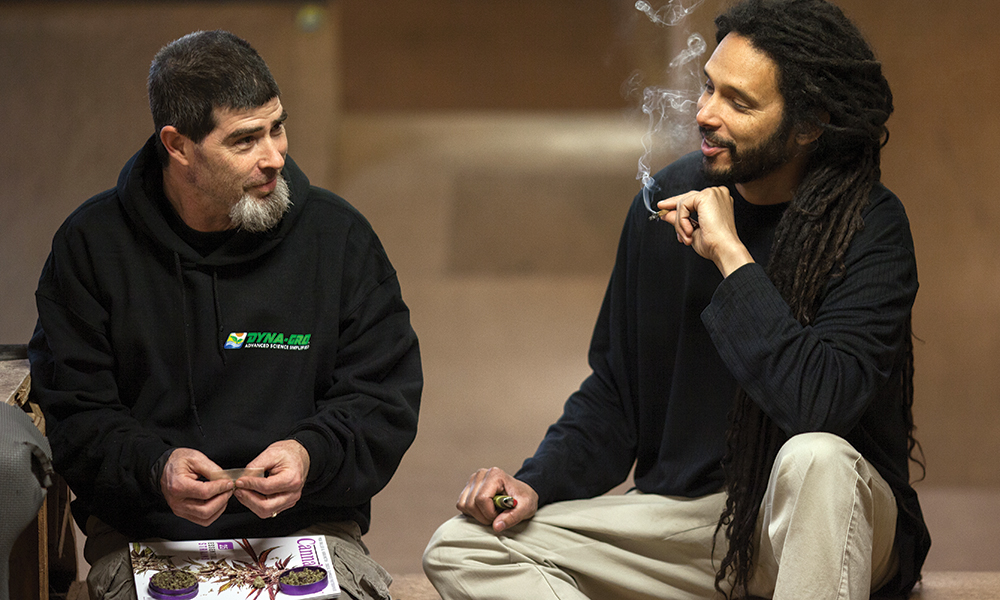
Neal’s now 48. He’s not skating today, but only because he’s still healing up from his latest injury, a rotator cuff tear that doctors say will keep him off his board for up to a year. But Neal vows he’ll be back in half that time, because he’s got a secret weapon: weed.
“I once suffered through three meniscus tears in my knee without any painkillers at all,” he says. “Herb is all I need to heal. Especially after I do physical therapy. When that pain flares up, some cannabis simmers everything down.”
Chronic pain and serious injuries are a way of life for dedicated skaters, particularly those who’ve been on their boards — trying to pull off gnarly tricks — for 30 years or longer. Neal has invited a few such friends over today to shred the ramp and talk with me about cannabis and pain management. Their collective tally of broken bones alone would make anyone think twice about the wisdom of their skate-or-die philosophy. And beyond the shock and agony of the injuries, there’s the emotional pain and isolation that comes with a long stretch of recovery and rehabilitation. One second you’re flying down the bank of an emptied out concrete swimming pool, free as a bird, the next you’re laid up in the hospital, being told you won’t get to ride again for the foreseeable future.
“I’ve seen friends in the skate community get a nasty injury, and then they keep taking the painkillers even after their body has healed,” Neal says. “From there they can move on to crushing up pills or worse. With cannabis, you just don’t see that. You still have your freedom, it doesn’t take your soul.”
Ease Your Way Back In
The skate session starts with two modest-sized doobies passed around among four or five guys in their forties and fifties. Pat Black is 53 and has been skating since he turned five. A carpenter by trade, he’s supported himself by building ramps for contests, though he never liked to compete himself.
“Smoking weed has always kept me out of trouble,” he says. “I was on my own very young, and there were harder drugs all around me, but I just didn’t ever want that for myself. Along the way, I’ve broken my neck, my back, my arms, my legs, quite a few things. I’ve been prescribed a lot of different pain pills, and basically they’re all a bunch of crap. They work at taking the pain away for a little while, but after that they just made me depressed. I see opioids hitting the skateboard community left and right. I had a friend overdose last night, though luckily he lived through it.”
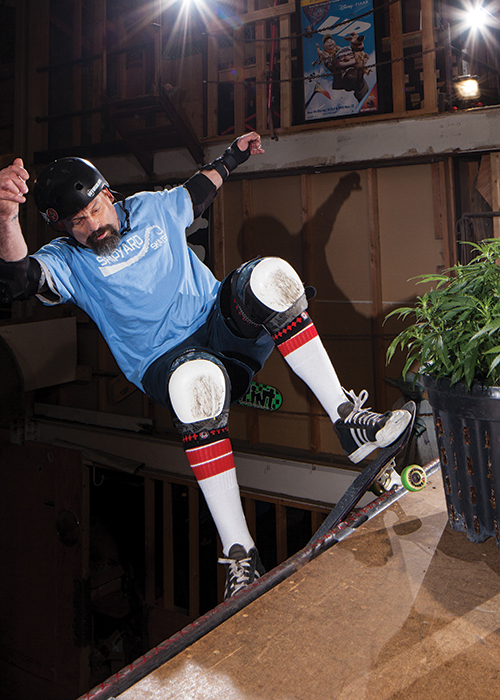
Black passes the joint to Lance Williams, who heartily agrees with this analysis. Williams grew up in Marin County (the original home of 420), and has been a part of the cannabis industry since 1994, including working for the Marin Alliance for Medical Marijuana, one of California’s original cannabis collectives. He’s currently applying to become a legal grower and credits weed with helping him survive a string of serious injuries sustained on skateboards, mountain bikes and motorcycles.
“Anybody who participates in an extreme sport is going to get hurt eventually. I’m about to turn 47, and I’ve had nine major surgeries. So if I lived someplace where cannabis is still illegal, I’d be pretty susceptible to opioids and all the problems that come with them. And if you’re taking opioids, you really can’t skateboard — at least not at a high level. Because you’re impaired. Also, you might not realize that you’re hurting yourself all over again because the pain has been killed. But if you’re smoking weed you can just kind of ease your way back into skating. That’s really important. Cannabis doesn’t work for everyone or for everything, but it does work for a lot of people and a lot of different conditions.”
Return to the Vert
“When you stop doing the thing you love, you start dying,” Jeff Hedges tells me as he passes the joint my way and heads back to the action.
I suppose he could have been referring to either skating or smoking weed, but I think he meant the combo. Either way, he’s still out here giving his all to two things you’re supposed to “outgrow” as a teenager.
Hedges was a pro skater back in the 1980s, when vert was king, and while he never became a household name or raked in huge endorsement deals, he remains a legend. When his particular discipline went out of style in favor of street skating, he slid out of the sport, raised a family, and figured his vert days were behind him. But more recently, he’s been back at it, fueled by a desire to feel the wind in his hair again, and a retro trend in the skate world that has old-time vert heads like him back in style.
Today, he’s trying to nail a hand plant while smoking a jay, so we can take a picture.
“Going down the ramp with a joint in my mouth, man, even if you’re trying not to inhale too much, you’re still inhaling quite a bit,” he later says with a laugh. “It was fun but challenging.”

Which is the way he likes it.
The first thing you notice hanging out with skaters on a ramp this big is how often and how hard they fall. Yes, proper equipment and technique cushions the blow, but still, all of these guys are nursing injuries as old as their teen years and as recent as about five minutes ago. On one clean run, Hedges swoops down the ramp trailing a tendril of smoke, sticks the hand plant, takes a mighty puff while the camera clicks away, and then gracefully glides back down the ramp. On the next, he takes a bone-rattling spill while still holding the joint in his mouth.
Once it’s clear he’s not (badly) hurt, everyone cheers.
“Generally, I try not to smoke at all on a day that I’m going to skate,” he says. “I wait until I warm up a bit on the ramp, and my body starts complaining, and then I take a couple of hits — not trying to get really stoned, just enough to soften the edges on that pain in my knees and back so I can keep skating. You obviously need to stop when you’re too hurt, but if you’re just old and sore, some pot will keep you out there.”
And beyond just dealing with injuries, cannabis also helps keep him in the flow.
“If you’re sitting on the couch and you get stoned, you can end up getting really sunk into that couch. Well, that’s the same with getting sunk into skating. You stop thinking about it and planning it, and that’s when new ideas come out of nowhere. You find out what you’re going to do as it’s happening. That’s when skating gets really good.”
TELL US, have you ever used cannabis for pain management?
Originally published in Issue 37 of Cannabis Now. LEARN MORE



